Monday Morning Update 11/23/09
From The PACS Designer: “Re: Google’s Chromium OS. Google has just announced the Chromium OS, an open source project. Since it is a completely Web-based open source development application, it brings with it some interesting possibilities for developers and eventually users. The Chrome OS browser will still be used to access all of the Chromium OS applications that evolve from development efforts, and some of the new features will eliminate the need for a hard drive since solid state memory will take its place. Chromium OS Security is a new approach to address security flaws.” Video overview here. I’m buying the concept because the Chrome browser is shockingly faster than FireFox (and less surprisingly, IE) when it comes to running complex Web apps. I’ve moved to it almost completely, even though it has some annoying deficiencies (no Google toolbar and no drop-down history).
From Dr. Pepper: “Re: Flash animation in ads. It’s causing me difficulties in scrolling and appreciating the content of your Web site. Can you limit this or allow us to turn it off?” There are many ways, but here’s the easiest one: click the View/Print Text Only link at the bottom of a posting to bring up a nicely formatted, paper-sized Web page with a Print option. Even then, it would be great if you take an occasional look and/or click on the sponsor ads since they make the wheels go ‘round and often have interesting information to share (nearly all the sponsors are big fans of HIStalk beyond just running ads).
From Bernie Tupperman: “Re: Kaiser. US News & World Report named KP Medicare Advantage in Colorado as the best in the country for Medicare, with all the rest of the KP plans except one near the top of their markets.” I don’t have any first-hand experience with Kaiser, but the pitch from George Halvorsen’s internal e-mail that Bernie forwarded is certainly compelling, not to mention big on IT:
When you are a KP Medicare Advantage member and have coordinated care, fully linked caregivers, prescriptions and tests done onsite in convenient proximity to the rest of our care team and then leave our coverage and have to go out into the wilderness of solo, unconnected, unlinked, uncoordinated doctors — and when your new doctors don’t even know what prescriptions other doctors have written or what tests your other doctors have taken — and when you can’t schedule an appointment electronically or order your refill prescriptions electronically or even send e-mails to your doctor — those patients feel like they have fallen into a time warp into a very primitive world.
From Cam Winston: “Re: Pennsylvania HIE. I’ve heard Medicity has been chosen as the vendor in a $10 million deal.” I’ve seen that mentioned, but not officially. I’m sure Medicity won’t issue a press release until the contract is signed. Obviously that’s a big win for them if so. That led me to think how long it’s been since they started sponsoring HIStalk and I think it was in 2003, the year I started writing it. I don’t know where the time has gone. Including this year — can it really be just three months or so until HIMSS?
I’ve been slightly involved in some software usability projects over the years, so I enjoyed these clips (above) of real-life user frustration with healthcare software. They’re from Healthcare Human Factors, based in University Health Network, Canada’s largest teaching hospital. Thanks to JustAThought for sending over the link.
The Harvard people who published the study (warning: PDF) saying EMRs don’t improve quality or save money don’t exactly come across as impartial academics in an interview with HealthLeaders Media. Some quotes: “The idea from this administration that we’re going to pay for health reform out of savings from electronic medical records is baseless propaganda … What kind of an idiot hospital administrator would buy a system that will actually decrease what you can bill to payers? These systems help them extract more money.”
Speaking of those Harvard authors, nobody seems to have noticed that they wrote Bleeding the Patient: The Consequences of Corporate Healthcare and seem to have a socialist bent (“only when the U.S. has a party of labor will we have a national health program … it’s going to take a broad strengthening of the left.”). They also founded Physicians for a National Health Program, which advocates single-payer national health insurance, so they have an agenda that goes beyond IT. They also advocate open source over vendor systems: “We should really think about whether we want to continue to use our public funds to promote private, entrepreneurial HIT systems that have a business orientation, or if we should use those funds for further development of less expensive, open-source HIT systems designed specifically to enhance the quality of patient care, just as the VA health system has done.” Not to quibble, but the VA didn’t get VistA for free — it spent what must have been millions if not billions to develop it, and unlike vendor system development, taxpayers footed the bill. Even though the authors seem to have strong opinions that bled over into what was supposed to be a research article, I can’t say I disagree with most of what they say.
Meanwhile, here’s how the authors did the research for their article. They matched up self-reported levels of hospital automation from HIMSS Analytics with Medicare Cost Reports and Dartmouth Health Atlas data over a four-year period, looking for a correlation between degree of computer use (calculated from the authors’ own formula), cost, and quality. They not only didn’t find any, but even the Most Wired hospitals showed no clear advantage. There are lots of limitations in their method (using Medicare cost data, using the limited quality measures in Dartmouth to extrapolate overall quality, and having incomplete data for some of the years). Do their conclusions hold water? Maybe in aggregate.
Here’s the same observation I always make when the Most Wired people use similar number-crunching to try to convince you that IT improves costs and outcomes — correlation is not causation. Also, the conclusion isn’t that IT isn’t worth it, only that they could not prove that it was from their approach. Still, I’ll go with their general conclusion since I’ve been saying it for years — if there was one rock-solid case study of a hospital that reduced cost or improving quality solely because of IT, that hospital’s competitors would be out of business, their IT vendors would own the market, and we wouldn’t be stuck with the unsatisfying conclusion that it’s not what you buy, but how you use it (actually, Kaiser may be that one rock-solid case study now that I think about it). Still, prospects who think they’ll be a notably positive exception keep the HIMSS exhibit hall full.
HIMSS paying people to watch EMR demos is a bad idea, 79% of you said. New poll to your right: studies are showing that EMRs haven’t done much to improve quality or reduce costs, so who’s to blame for that?
A Mayo Clinical family medicine clinic in Arizona notifies patients that it’s dropping Medicare because it doesn’t pay enough to cover the clinic’s costs. Patients will be fully responsible for a $250 annual administrative fee, office visit fees ranging from $175 to $400 each, and a physical, with the grand total estimated at $1,500 per year.
Some interesting quotes from jurors on Charlie McCall’s trial. Referring to Al Bergonzi: “We just thought he was a thug in a suit”. Of Charlie’s legal dream team: “They were a little more theatrical … It goes to show spending millions of dollars on your defense is not necessarily effective.”
Three Denver area provider groups (Children’s Kaiser, and Exempla) go live on their HIE.
Listening: 30 Seconds to Mars, a reader recommendation. Sounds good – hard progressive with a little grunge DNA in there.
Shaun Priest, a vendor VP (I’m not sure if I’m supposed to mention the company’s name), has a novel available on Amazon called Decisions that involves an HIT sales guy fighting his demons.
HIMSS isn’t the only big trade show bailing on Chicago because of cost. The CEO of the huge plastic industry trade show, which is leaving Chicago for Orlando after 40 years, blames the work habits of union workers rather their reputation for being nasty. “We heard over and over again that the electricians were nice, but they dragged their tails. Jobs that should take two hours, they dragged out to five or six.” The president of the Chicago Federation of Labor said it was a wake-up call, but the electrician’s union boss wasn’t so humble: “I think HIMSS would have left anyway. They took a parting shot when they pointed at electricians.”
Odd, but possibly effective: a British dancer with epilepsy plans to induce an on-stage epileptic seizure to raise awareness of the condition.
MedAptus announces that its system for capturing professional charges is available for BlackBerry smartphones and coming next year for the iPhone.
Tampa General Hospital, like everybody else, signs with Epic in a $90 million project. It was just announced, but rumor reporter Jerry Seinfeld told you about it here on November 6.
The CSI Companies, the Jacksonville, FL-based staffing company that Grady Hospital (GA) chose for its Epic implementation, says business is up 40% over the past four years to $21 million, mostly because of healthcare IT. It says EMR implementations typically require 20-40 employees for 2-4 years.
Odd lawsuit: a man whose ear was torn off by his son’s dog is transported to the hospital by New York City paramedics who brought the ear along on ice. The hospital said the ear was contaminated, so the paramedics tossed it in the trash. He’s suing the city for being deprived of treatment, so the city is suing the hospital for telling the paramedics to throw it away. And in Florida, a woman who claims her emphysema was caused by smoking is awarded $300 million in her lawsuit against Philip Morrris, claiming the company is responsible for her addiction.
Mr. HIStalk’s 10 Ways to Get Off on the Wrong Foot as a New Hospital IT Executive
- Convene endless department meetings under the naive assumption that all problems, from understaffing to poor system architecture, are due to insufficient employee communication.
- Insist on extensive cross-training and information-sharing, thereby alienating the experts who deliver most of the results, but who don’t like working in teams.
- Mandate the use of overlapping software applications that require employees to record time and write status reports in multiple locations.
- Fill leadership positions with people from your previous employer, communicating a clear message of distrust for the department that just hired you.
- Spend time behind closed doors working on org charts, having meetings with high-level peers, and plotting strategy, all without ever getting to know the employees who have to actually do the work being planned.
- Repeatedly state that you wouldn’t have been brought in from outside if things were going all that well, so obviously past accomplishments were bogus and everything must be immediately changed to the exact structure, policies, and practices of wherever you came from.
- Compare the software applications in use with those great ones where you came from, implying that you’ll displace the existing ones at the first opportunity even though you know nothing about them.
- Consider group consensus to be equal at best to your own anecdotal experience.
- Convince the executives to increase IT funding as part of the job offer, then take personal credit for the resulting technology improvements even though they could have been achieved at any time had the money been freed up.
- Repeatedly remind low-level employees that, unlike them, you get a reserved parking spot, a sweet office, and bonuses.








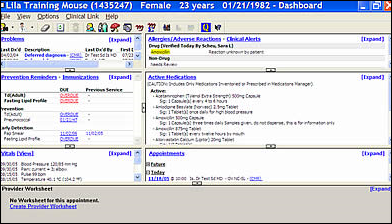





















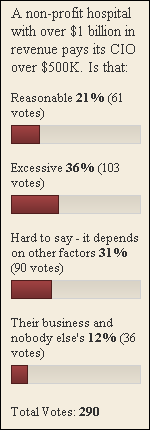



























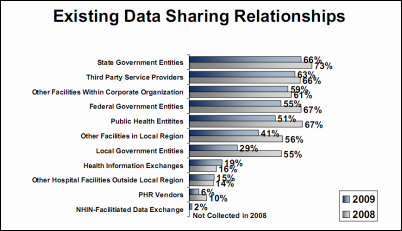
















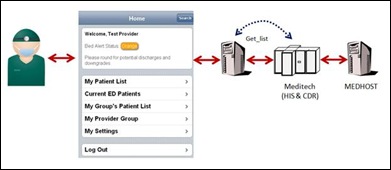


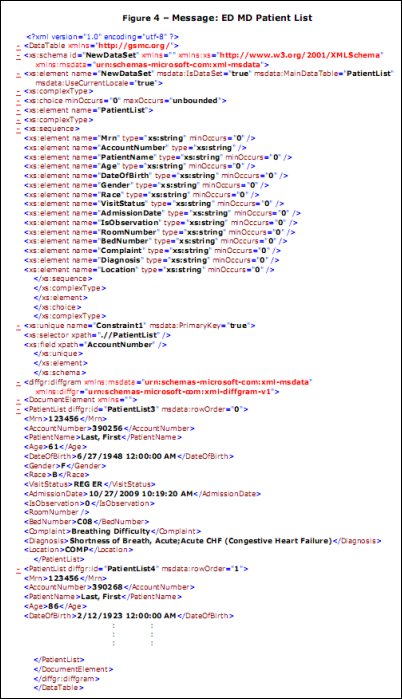



















































































Hard agree with "actionless figure" - I realize that LinkedIn is the only mostly-non political form of social media we…